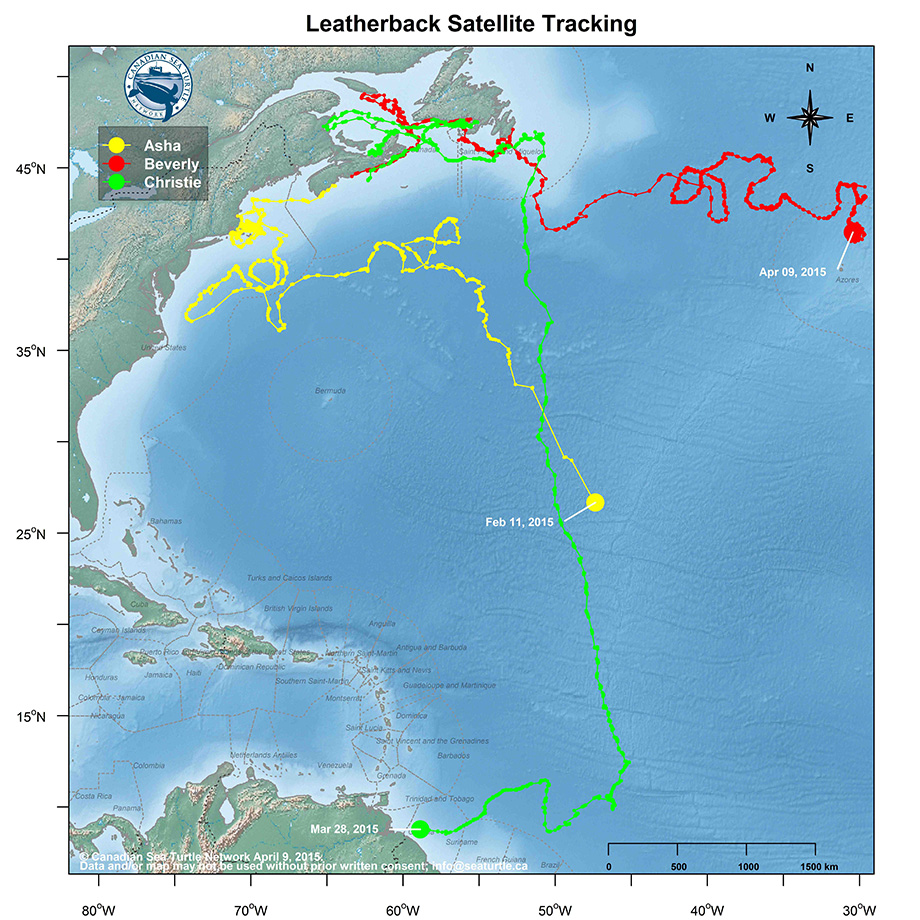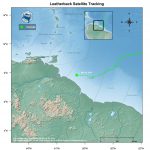
Well, my prediction that Beverly would turn suddenly down to the nesting beach was wrong. She is still hanging off the Azores, and not heading to Trinidad. The reason I’d been so sure she might go to a beach there was because she had been recorded nesting in Trinidad before—and the last time was in 2013.
Most leatherbacks in the western Atlantic nest every two to three years. The majority nests every two years (hence, my assumptions about Beverly). The time between nesting years is called the “remigration interval,” and it varies, sometimes by many years. Pacific leatherbacks, for example, have remigration intervals that are closer to four years.
Scientists think the remigration interval reflects the amount of food a turtle finds on her migration. The interval is the time it takes the leatherback to eat enough to generate the energy required to migrate back to the breeding ground and reproduce.
“It’s not surprising that she’s not remigrating,” says Canadian sea turtle expert Dr. Mike James. “What is interesting is that Beverly is so far north. She must have found an abundant food resource because she’s stayed in the same area for months, which is unusual. I imagine she’s good and fat by now. I’m curious to see in the next few months what she does—whether she goes back to the slope waters off Canada, or whether she does what none of our tagged animals has done before, and goes east.”
If Beverly does head back into Canadian waters, maybe we’ll find her again up here this summer.


